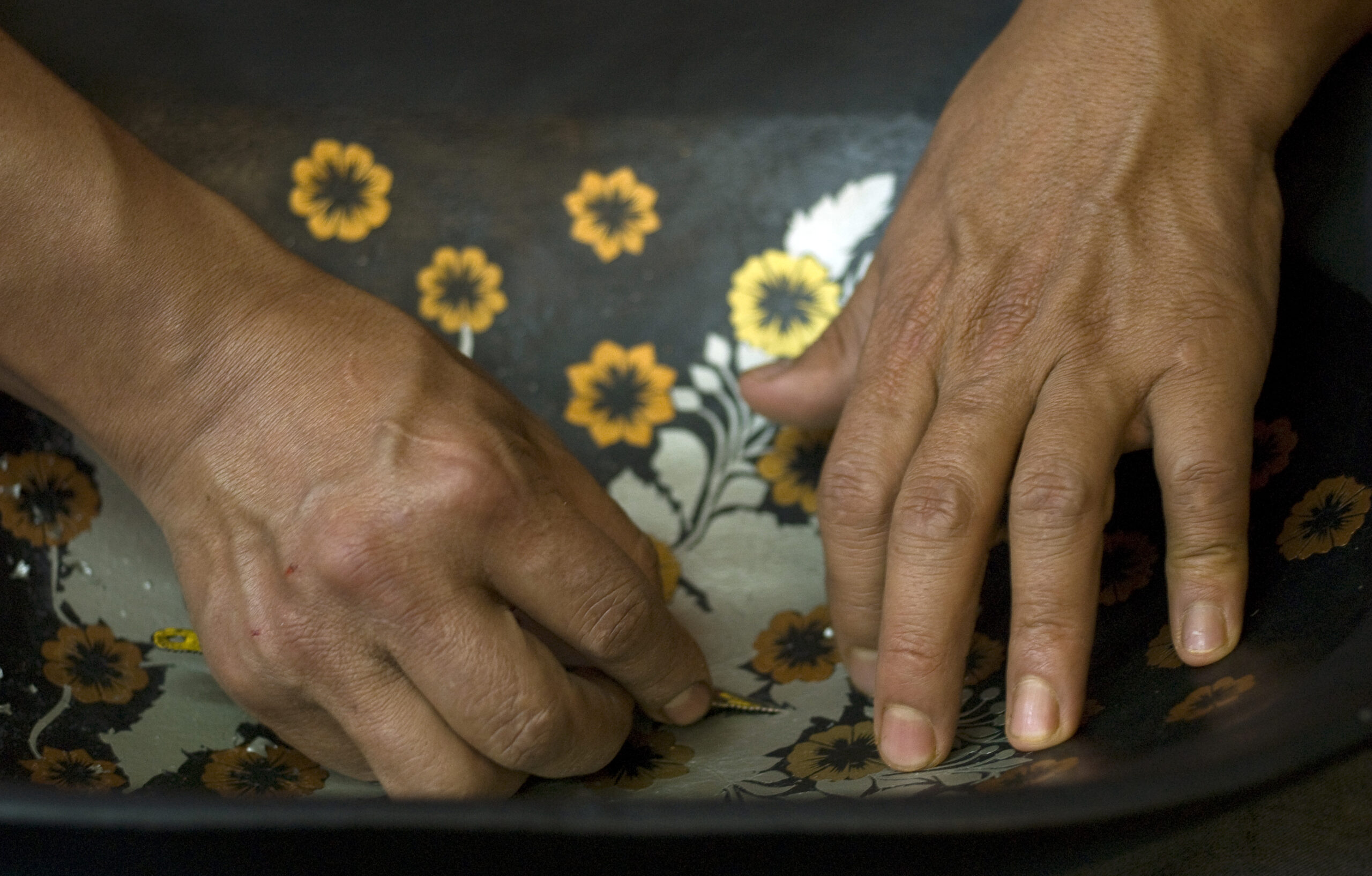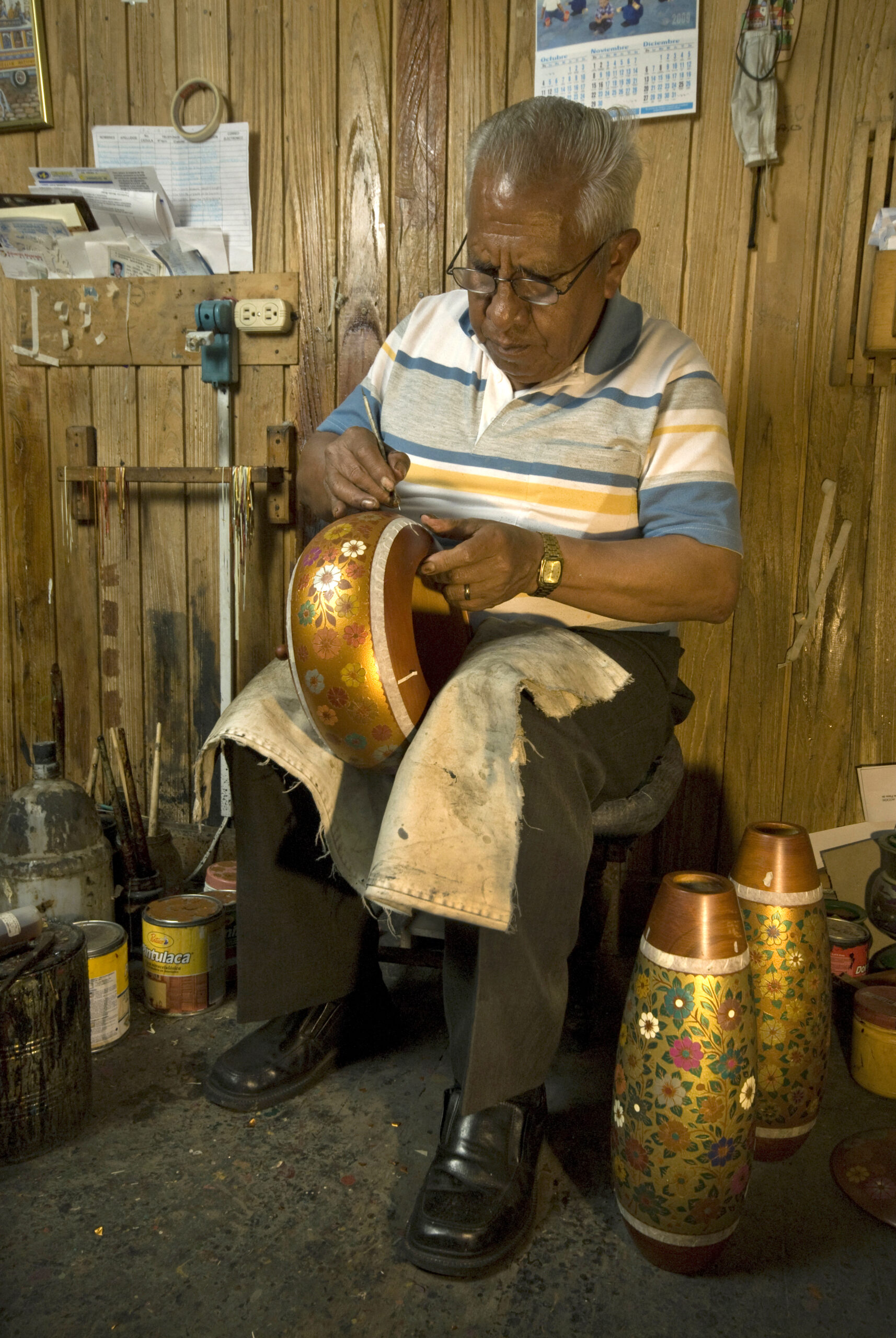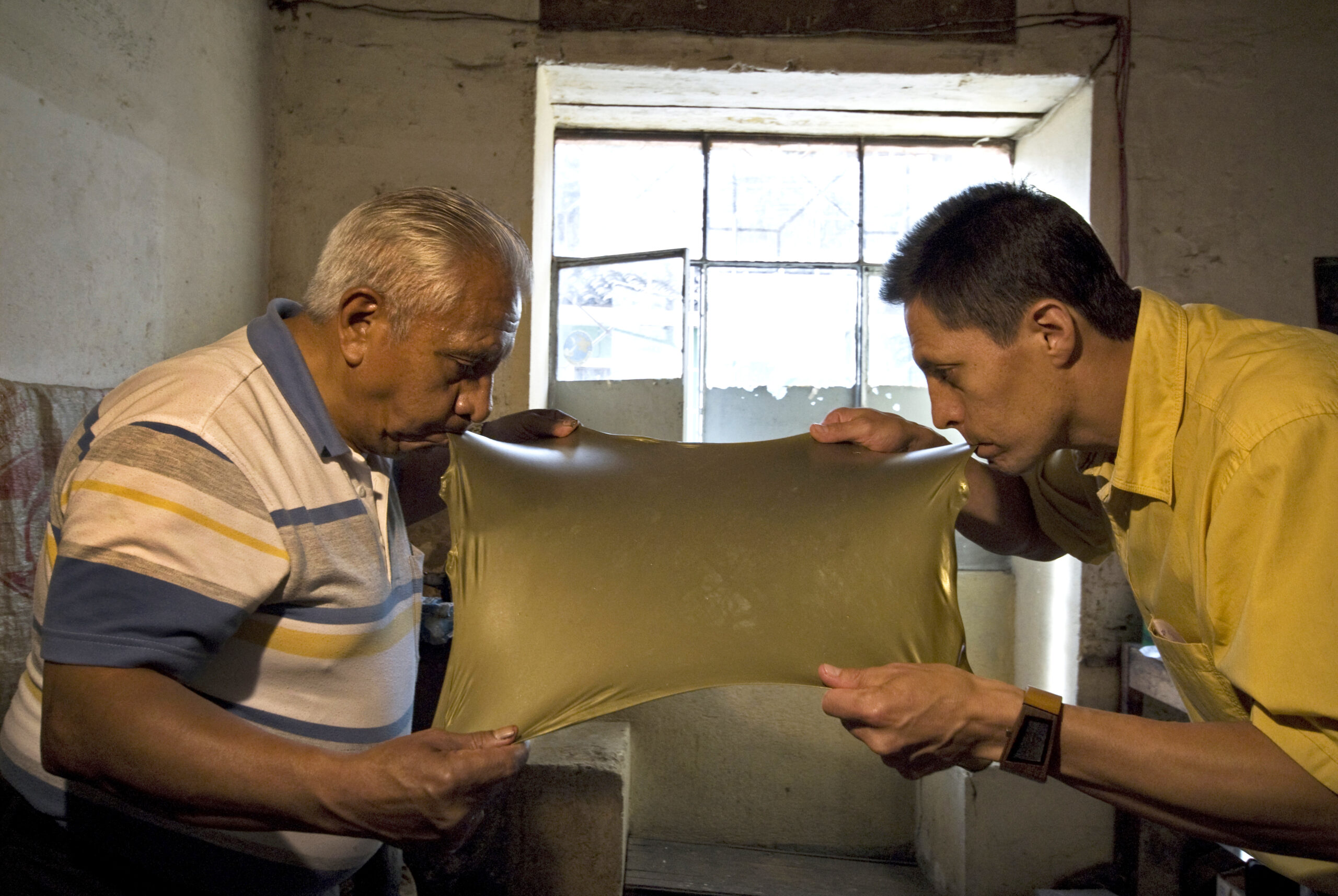Description
Técnica prehispánica originaria del departamento de Nariño en el sur del país.
Los relatos de los conquistadores españoles dan cuenta del arte del mopa mopa, con el que los indígenas Pastos y Quillacingas impermeabilizaban objetos de madera y cuentas de collares.
Alexander Von Humboldt, a principios del siglo XIX, escribe el primer informe sobre el mopa mopa, describe la técnica y la procedencia de los colores vegetales.
Esta técnica artesanal fue declarada Patrimonio Cultural Inmaterial de la Humanidad por la UNESCO, y fue reconocida como manifestación cultural única en el mundo.
La materia prima, una resina vegetal, se obtiene de un arbusto (Elaegia pastoensis) que solo crece en las selvas del Putumayo.
Los recolectores recogen los cogollos y forman un bloque que venden por kilos a los artesanos barnizadores en la ciudad de Pasto.
Los cogollos deben ser sometidos a un proceso de limpieza, luego son macerados, hervidos, molidos, y amasados para lograr una mayor maleabilidad, (antiguamente eso se hacía masticando), esta práctica ya desapareció.
Se añaden las anilinas y se amasa nuevamente para que el color sea uniforme.
El objeto que se va a decorar es preparado previamente, lijándolo y aplicando varias capas de pintura.
El barniz se estira, entre dos personas con las manos y ayudados con la boca para formar una fina película que se adhiere a la superficie, con el calor de la mano.
Los diseños resultan de cortar los motivos deseados, con un bisturí y luego se retira el material sobrante.
En la época de la colonia se utilizaba la película transparente del barniz sobre laminillas de oro, plata y estaño.
La aplicación del barniz demanda gran precisión y habilidad y los secretos del arte son transmitidos de padres a hijos.
Tradicionalmente se han elaborado objetos decorativos como cofres y bargueños, y otros funcionales como mesas auxiliares, bancos, charoles, y platos, entre otros, con motivos inspirados en la fauna y la flora.
Los productos han evolucionado y hoy se elaboran objetos para la decoración de los más exigentes ambientes contemporáneos.
Eduardo Muñoz Lora, es un artista plástico y Maestro Artesano del Barniz, que se ha dedicado a la investigación de las posibilidades de la materia prima y a vez quiere reflejar en su arte la cosmogonía ancestral de los primero habitantes de su región, esto lo plasma en obras de gran belleza que le han merecido reconocimiento a nivel nacional e internacional.
Eduardo logra por medio de transparencias dar volumen a las figuras en sus piezas, con las que reafirma su identidad cultural.
Actualmente en la ciudad de Pasto hay 35 talleres de Maestros dedicados a trabajar el Barniz, recientemente se han capacitado 50 aprendices. Nueve talleres han sido adecuados como escuela taller y museos vivos.
Bibliografía
Duque, Duque C. Maestros del arte Popular Colombiano Suramericana. Panamericana Formas e Impresos 2010 Bogotá.
Alvarez-White. M.C. El Barniz de pasto: Secretos y Revelaciones. Universidad de los Andes, Facultad de Artes y Humanidades. Ediciones Uniandes, 2023 Bogotá.
english
Mopa Mopa
“Mopa Mopa” is a pre-Hispanic technique originating from the department of Nariño in the south of the country. The accounts of the Spanish conquistadors give an account of the art of “mopa mopa”, with which the indigenous Pastos and Quillacingas waterproofed wooden objects and necklace beads.
Alexander Von Humboldt, at the beginning of the 19th century, wrote the first report on the “mopa mopa”, describing the technique and the origin of the vegetable colours. This handicraft technique was declared Intangible Cultural Heritage of Humanity by UNESCO, and was recognised as a unique cultural manifestation in the world.
The raw material, a vegetable resin, is obtained from a bush (Elaegia pastoensis) that grows only in the forests of Putumayo. The collectors gather the buds and form a block that they sell by the kilo to artisan varnish makers in the city of Pasto.
The buds must undergo a cleaning process, then they are macerated, boiled, ground, and kneaded to achieve greater malleability (in the past this was done by chewing), but this practice has now disappeared. The anilines are added and kneaded again so that the colour is uniform. The object to be decorated is prepared beforehand by sanding and applying several coats of paint. The varnish is stretched between two people using their hands and mouths to form a thin film that adheres to the surface with the heat of the hand. The designs are made by cutting out the desired motifs with a scalpel and then removing the excess material.
In colonial times, the transparent film of varnish was used on gold, silver and tin plates. The application of varnish requires great precision and skill, and the secrets of the art are passed down from father to son. Traditionally, decorative objects such as chests and chests of drawers have been made, as well as functional objects such as side tables, benches, charoles and plates, among others, with motifs inspired by fauna and flora. The products have evolved and today objects are made for the decoration of the most demanding contemporary environments.
Eduardo Muñoz Lora is a plastic artist and Master Varnish Artisan, who has dedicated himself to the investigation of the possibilities of raw material and at the same time wants to reflect in his art the ancestral cosmogony of the first inhabitants of his region. This is reflected in works of great beauty that have earned him national and international recognition. Eduardo achieves by means of transparencies to give volume to the figures in his pieces, with which he reaffirms his cultural identity.
Currently in the city of Pasto there are 35 workshops of masters dedicated to working with varnish, and 50 apprentices have recently been trained. Nine workshops have been adapted as workshop schools and living museums.





Reviews
There are no reviews yet.